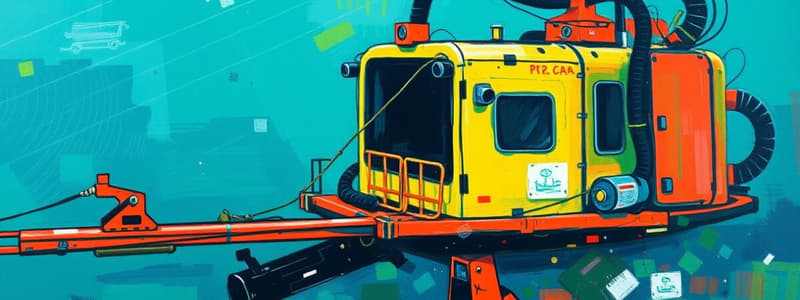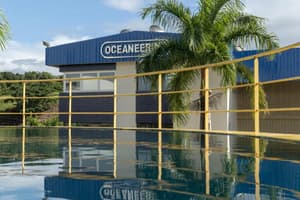Podcast
Questions and Answers
What was a disadvantage of the safety harness used in this incident?
What was a disadvantage of the safety harness used in this incident?
- It had only one lanyard and hook. (correct)
- It was not adjustable for different heights.
- It was designed for ground use only.
- It was too loose to provide support.
What environmental conditions contributed to the incident?
What environmental conditions contributed to the incident?
- Insufficient illumination during darkness and rain. (correct)
- High temperatures.
- Strong winds.
- Excessive humidity.
What was lacking in the vessel's risk assessments?
What was lacking in the vessel's risk assessments?
- Involvement of all crew members in discussions.
- Comprehensive identification of potential risks. (correct)
- Regular updates based on newer regulations.
- Tools for performing the assessments.
What was a critical gap in the vessel's safety procedures?
What was a critical gap in the vessel's safety procedures?
What should crew members consider to improve safety?
What should crew members consider to improve safety?
Study Notes
ROV Incident Overview
- Umbilical separation led to ROV falling into the sea and hitting the seafloor.
- Cause identified:
- Latch mechanism wasn’t cleaned and lubricated to OEM standards.
- LARS (Launch and Recovery System) procedure specific to the installation was not followed.
- Lack of supervisory verification of maintenance plans and LARS procedure prior to work.
Actions Taken for Resolution
- Latch functionality was restored by cleaning, lubricating, and verifying components against OEM specifications.
- Emphasis placed on adherence to the specific LARS procedure for ROV systems.
- Supervisors instructed to ensure the correct maintenance plan and procedures are in place.
Design and Safety Recommendations
- Latch design may risk damaging umbilicals if malfunctioning.
- Manufacturers urged to identify and address hazards linked to design, guarding, and control positioning.
- A new standard, 'BS EN 81-44', published to ensure safe design of lifting appliances in wind turbines.
- Duty holders encouraged to evaluate the design of lift gates, guarding, and control positioning to mitigate risks.
Halogen Lamp Incident Summary
- During nighttime painting on a vessel, a halogen lamp fell, igniting a small fire on scaffold boards.
- Response by motormen and mechanics followed emergency protocols; the fire was quickly extinguished without injuries, but equipment was damaged.
Root Causes of Halogen Lamp Incident
- Halogen lamp was affected by gusts of wind due to placement in an exposed area.
- Insufficient supervision during breaks contributed to the incident.
Lessons Learned from Halogen Lamp Incident
- Consider using LED lamps for safety.
- Shut down equipment or assign supervision during breaks.
- Ensure all installed equipment is stable and safe before breaks.
- Maintain awareness of weather conditions while working.
Man Overboard Incident Overview
- A crew member fell overboard while preparing mooring lines near a structural pillar on a vessel.
- Incident happened during early morning hours; crew failed to reach lifebuoys thrown to assist.
Incident Analysis and Recommendations
- Positive changes implemented on the vessel after the incident.
- Key identified issues include the need for guardrails or safety measures around openings.
Slip Incident in Cargo Hold Overview
- A crew member sustained an open fracture after slipping while working on a bulkhead locking bolt in dark, rainy conditions.
- Safety harness had only one lanyard and hook, limiting mobility at height.
Issues and Challenges Faced
- Poor visibility contributed to the incident.
- Inadequate risk assessments related to working at height.
- Lack of equipment and procedures for casualty recovery from cargo holds.
Recommendations for Safety Enhancement
- Consider potential risks and prepare response plans accordingly.
- Ensure comprehensive safety training and appropriate recovery equipment are available to prevent escalating incidents.
Studying That Suits You
Use AI to generate personalized quizzes and flashcards to suit your learning preferences.
Related Documents
Description
This quiz tests your understanding of ROV maintenance and the importance of following specified procedures. It highlights the impact of improper lubrication and the necessary verification steps that supervisors must take before operations. Ensure you comprehend the protocols to avoid incidents at sea.



